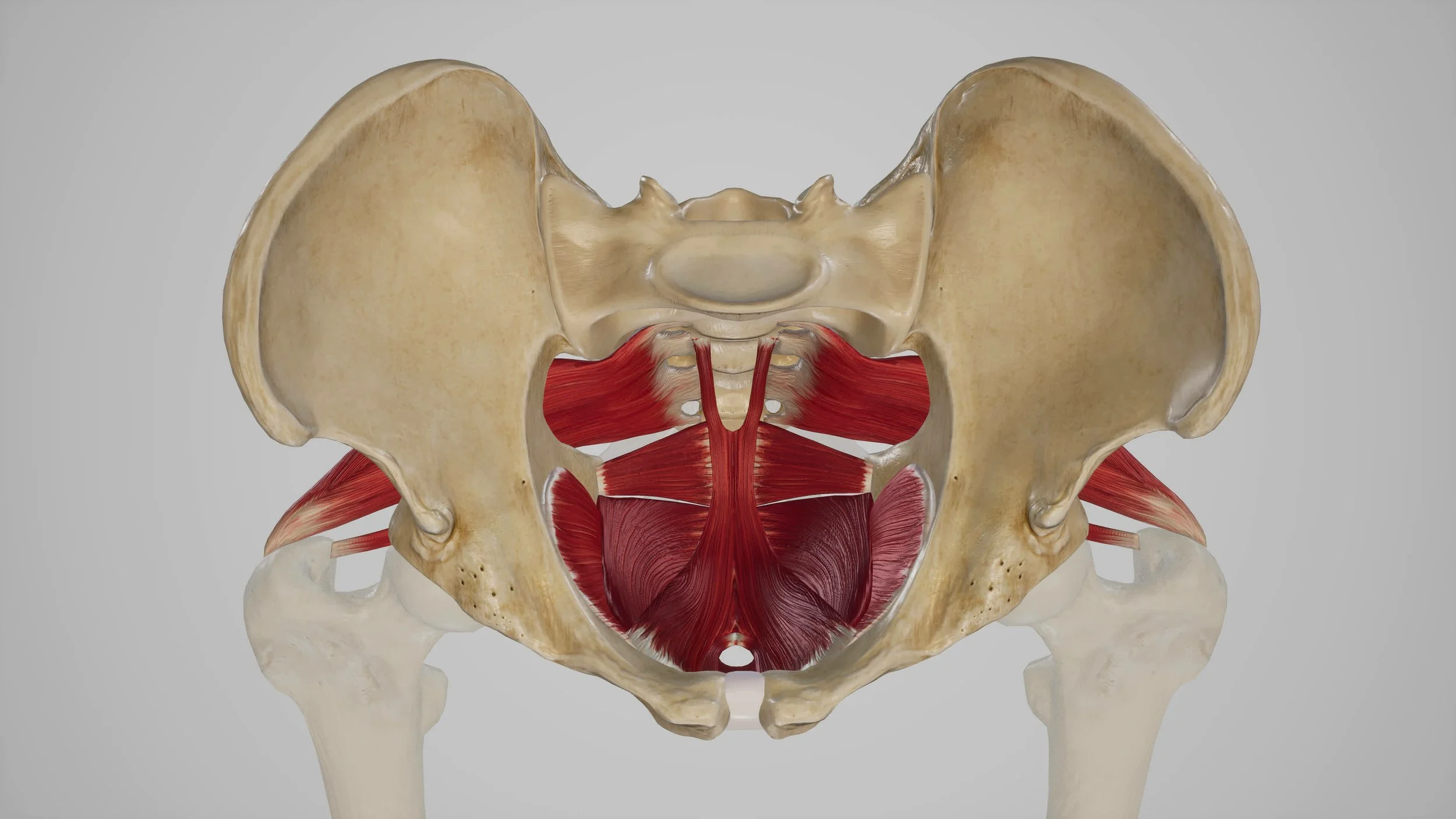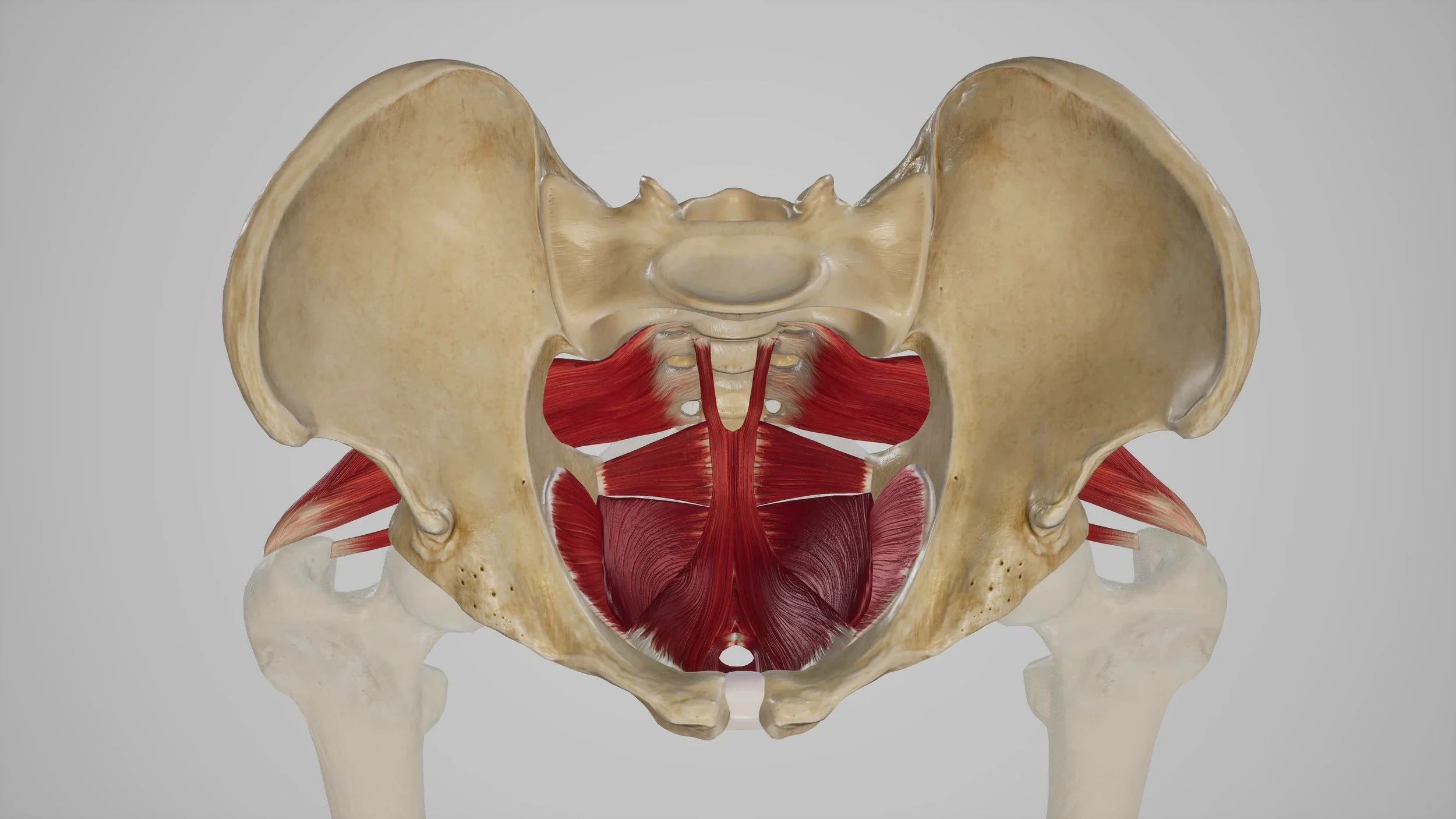Understanding Pelvic Floor Dysfunction: Signs, Symptoms, and Solutions
Pelvic floor dysfunction is a common, yet often misunderstood, condition that affects millions of women and men worldwide.
While it can lead to discomfort, embarrassment, and a decline in quality of life, many people aren’t aware of what pelvic floor dysfunction is—or how it can be treated.
In this post, we’ll discuss the anatomy of the pelvic floor, the various types of dysfunction, and how physical therapy can offer effective solutions to regain control and improve overall well-being.
What Does the Pelvic Floor Do and Why Is It Important?
The pelvic floor is an integral part of our core, made up of muscles that support the organs in your pelvis, including:
the bladder
uterus (for women)
prostate (for men)
and rectum
These muscles form a hammock-like structure at the base of your pelvis, supporting functions like:
urination
bowel movements
And in women:
sexual intercourse
childbirth
What Are the Different Types of Pelvic Floor Dysfunction?
There are several types of pelvic floor dysfunction, and each can present with unique symptoms:
Pelvic Floor Muscle Weakness: When the muscles are too weak, they struggle to provide adequate support for the pelvic organs, often leading to conditions such as pelvic organ prolapse or urinary incontinence.
Pelvic Floor Muscle Tightness: Overly tight muscles can cause pelvic pain, pain with intercourse, increased urinary urgency and frequency, as well as urge incontinence or difficulty with bowel movements.
Poor Coordination: In some cases, the pelvic floor muscles may not coordinate properly, leading to issues like chronic constipation or the inability to fully empty the bladder.
How to Recognize the Signs and Symptoms of Pelvic Floor Dysfunction
Pelvic floor dysfunction can manifest in a variety of ways, depending on the type and severity of the issue. Common symptoms include:
Urinary Incontinence: Leaking urine when coughing, sneezing, or exercising is a hallmark sign of a weak pelvic floor. This is particularly common in postpartum women.
Pelvic Pain: Pain in the lower abdomen, groin, or even lower back can be related to pelvic floor dysfunction.
Bowel Issues: Struggling with chronic constipation or fecal incontinence can indicate pelvic floor muscle dysfunction.
Pain During Intercourse: Women experiencing pain with penetration may have pelvic floor tightness or spasms.
Pelvic Organ Prolapse: A feeling of heaviness or pressure in the pelvic area, sometimes described as a “bulge,” could indicate that the pelvic organs are shifting from their normal position
These symptoms are not only physically uncomfortable but can lead to emotional distress, especially when they interfere with daily life activities like exercising, socializing, or maintaining intimate relationships.
What Are the Main Causes of Pelvic Floor Dysfunction?
Pelvic floor dysfunction can be caused by a variety of factors, including:
Childbirth: Pregnancy and delivery can weaken or strain the pelvic floor muscles, leading to dysfunction postpartum.
Aging: As we age, muscles naturally lose strength and flexibility, including those in the pelvic floor.
Surgery or Trauma: Pelvic surgeries, including hysterectomies, can contribute to dysfunction. Physical trauma from an accident can also affect the pelvic muscles.
Low Back and Hip Dysfunction: These issues can significantly contribute to pelvic floor dysfunction due to the close interconnection of muscles, joints, and nerves in these areas. When the low back or hips are not functioning properly, they can cause compensatory movement patterns, pelvic misalignment, or nerve irritation, all of which place extra strain on the pelvic floor. Addressing dysfunctions in the low back and hips is essential for restoring proper pelvic floor function and overall pelvic health.
Chronic Straining: Constant straining due to constipation or heavy lifting can weaken or injure the pelvic floor muscles.
Obesity: Excess weight puts additional pressure on the pelvic floor, leading to dysfunction over time.
How Pelvic Floor Therapy Can Help You Recover and Feel Better
Pelvic floor physical therapy is a highly effective, non-surgical treatment for pelvic floor dysfunction. At Klein Physical Therapy, we take a whole-body approach to treatment. Here’s how we can help you:
Personalized Evaluation: You will begin with a thorough evaluation, which includes an assessment of your pelvic floor muscles, posture, and movement patterns. This allows us to tailor a treatment plan specifically for your needs.
Pelvic Floor Muscle Training: Through targeted exercises, you’ll learn how to strengthen or relax your pelvic floor muscles. This may include biofeedback or manual therapy to help you understand and gain control of these muscles.
Manual Therapy: We use hands-on techniques like, myofascial release, visceral manipulation, or joint mobilization to alleviate your pain, reduce muscle tension, and improve coordination in your pelvic floor.
Education and Empowerment: Our therapists will educate you on proper posture, breathing techniques, and lifestyle modifications that support long-term pelvic floor health. You’ll leave feeling empowered to manage your condition beyond therapy sessions.
Home Exercise Program: To support your progress, we’ll develop a personalized home exercise plan that complements your in-office treatments, helping you continue your recovery journey independently.
We are here to support you every step of the way as you work toward improved health and well-being.
Real-Life Success Stories: How Pelvic Floor Therapy Helped Our Clients
At Klein Physical Therapy, we’ve helped countless individuals regain control over their pelvic health. Here’s a story from one of our clients, Emily:
“Lea is an incredibly knowledgeable pelvic floor PT. You gain so much information about the source of your pain, and have visible progress after each appointment. Lea has an incredible way of explaining your medical conditions to you and encouraging you with practical ways of overcoming pain and living optimal health! Highly recommend her for anyone even thinking of exploring pelvic floor PT. See Lea first!”
Another story from our client Marc:
“Kim Landers at Klein is awesome! I saw her in advance of a prostate procedure, since the procedure is known to result in some short-to-intermediate term urinary incontinence. Kim was clearly the person to see, since she seemed SO knowledgeable about what I should expect and how to mitigate it. She had research supporting her approach and had clearly done her homework. And it worked, since despite the statistics, I returned to my normal continence the day after the surgery. My surgeon and my local urologist both said that was basically unheard of. I can’t recommend Kim highly enough for any man facing any sort of prostate procedure.”
When Is the Right Time to Seek Help for Pelvic Floor Dysfunction?
If you’re experiencing any of the symptoms mentioned above, it’s important to seek help sooner rather than later.
Pelvic floor dysfunction is highly treatable, and there’s no need to suffer in silence. You don’t have to live with incontinence, pain, or discomfort – pelvic floor therapy can offer lasting relief.
Take Control of Your Pelvic Health Today: How You Can Start Feeling Better
Pelvic floor dysfunction can feel overwhelming, but you’re not alone.
With the right treatment plan and support, you can regain control of your pelvic health and improve your quality of life.
If you are in the Denver, Colorado area, contact us today to schedule a free consultation and start your journey to wellness.




